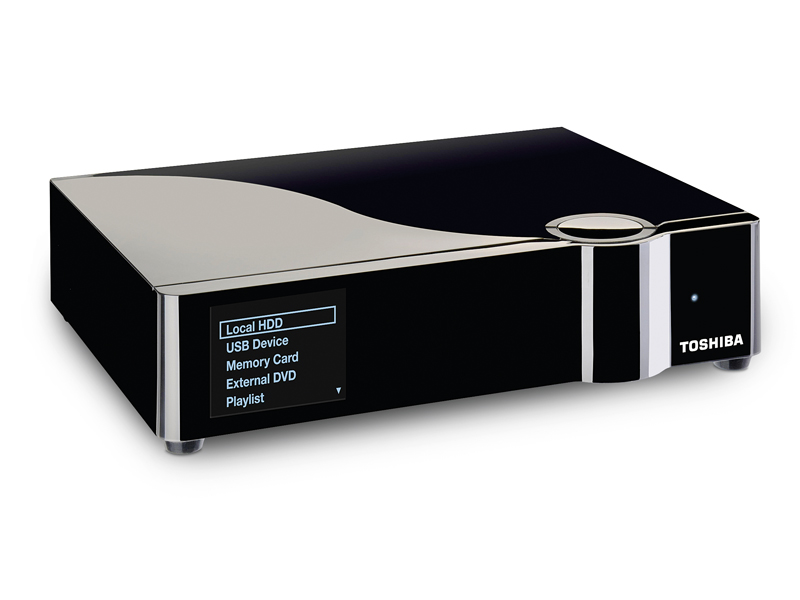TechRadar Verdict
A neat black box with large storage but awkward UI
Pros
- +
Large hard disk
- +
Supports good range of audio and video file formats
Cons
- -
Inelegant graphical interface
- -
Limited browsing options
Why you can trust TechRadar
There's no shortage of multimedia hard disks available, and they're handy for storing photos, music and video files and playing them on a TV or music system.
The Toshiba Stor.E TV+ is a neat little black box that sits alongside your TV. Two versions are available: the one reviewed here with a 1TB internal hard disk and a 2TB model at £200. This is cheaper than rivals such as the popular Western Digital WD TV, which costs £199 for a 1TB hard disk.
Specialist hard disk manufacturers produce most of these devices, and they aren't always as user-friendly as they could be. So we were curious to see what additional expertise mass market brand Toshiba would bring to its Stor.E TV+.
Features
A glance around the back reveals two USB ports – one for connecting to a PC, the other for attaching a memory stick, external hard drive or camera. These sit alongside an Ethernet port for network connection and HDMI port that provides 1080p output for your HD TV.
There's also a composite video output, analogue stereo and coaxial connector for 5.1 audio. On the right-hand side of the unit you get a third USB port and a memory card reader.
We were a little disappointed when we powered up the Stor.E TV+ to find a decidedly functional onscreen interface. Its Home screen consists of eight icons, which enable you to browse the contents of the internal hard disk, connected USB devices or memory cards, or to adjust network and other settings.
One option that did catch my eye, though, was the 'External DVD' icon that lets you connect a USB DVD drive to the Stor.E TV+ to play discs. You can control playback using the standard remote control provided, which also includes an 8x zoom for video playback, 32x fast forward/back or 1/16x slow motion.
The Stor.E TV+ can also play a good range of audio and video file formats. It handled my mixed iTunes library of AAC and MP3 audio files with no problems, and produced good results with a number of HD video test files. Supporting Universal Plug and Play (uPnP), it can also play media files stored on games consoles on your network.
Limitations
The Stor.E TV+ does have some rough edges, though. There's no support for DivX or Xvid formats, and MP4 files from iTunes with the .m4v suffix had to be re-labelled as MP4. The files played perfectly well, but renaming is tedious work.
You can browse individual folders on the internal hard disk, but the device won't let you check your music library by artist, genre or album title, as per the WD TV.
Toshiba boasts that the Stor.E TV+ can store thousands of hours of media files, but it needs to provide more efficient browsing options to help you find what you want more quickly.
Follow TechRadar Reviews on Twitter: http://twitter.com/techradarreview
Cliff Joseph is a former Editor of MacUser magazine, and a freelance technology writer with 30 year’s experience in the industry (and old enough to remember when Apple was close to going bust…).
His first job involved using Macs for magazine sub-editing and typesetting, which led to the realisation that these computer-thingies might actually turn out to be useful after all. After a few years specialising in the Mac side of the market, he went freelance and embraced the wide world of digital technology, including Windows PCs, digital audio and hi-fi, and networking. Somewhere along the line he also developed a bit of a gaming habit and has stubbornly waved the flag for Mac gaming for far too many years.
